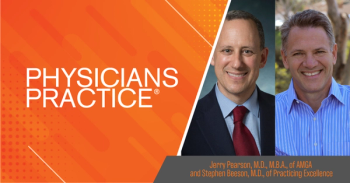
Staffing for Work Flow
Wondering if you are overstaffed? Make sure to evaluate your work flow and practice operations first before cutting staff.
“Am I overstaffed?” I hear this question all the time from physicians. Generally what I find are appropriate staffing levels, but ineffective coverage. In other words, over the course of a week, the right number of staff are in place, but on a given hour of the day they are not. The key to effective staffing is
Phones. Even without consideration for specialty type, every practice administrator will tell you that the phones are busier on Monday mornings than any other time of the week. Yet, practices often have the same number of staff answering phones on Monday morning that they have on Thursday afternoon.
To get a better idea of your phone volume and peak hours, do a
Triage. A triage nurse can typically support about sixty-five calls per day. All too often, physicians don’t staff for this position, instead trying to return calls themselves in between patient visits, no-shows, or even lunch breaks. This often creates additional problems: repeat calls from patients,
Lunch hour. In any business, customer service shouldn’t stop during lunch hour; yet all too often I see practices close operations for lunch. Many patients have only their lunch hour to make personal calls, and if your phones are off service they can’t access you. You should know how many calls come into your practice during a typical lunch hour. And, if you don’t answer them, your
Work hours. If your first patient is scheduled at 8:30 a.m., then your door should be open by 8:00 a.m. That means your receptionist should start her day at 8:00 a.m. as well. However, you don’t need your check-out and referral staff starting that early. Have these positions come in later and leave later so they are available at the end of your day. This is also a great way to reduce overtime. Don’t forget to release your receptionist earlier than check-out staff; once your last appointment is roomed, that function is complete for the day.
You know your practice better than anyone. Make an effort to critically watch your work flow and adjust staffing as necessary - being flexible will
Rosemarie Nelson is a principal with the MGMA healthcare consulting group. She conducts educational seminars and provides keynote speeches on a variety of healthcare-technology and operational topics. Drawing upon her diverse experience, Nelson provides practical solutions to help medical groups succeed in their practices. She may be reached at
Newsletter
Optimize your practice with the Physicians Practice newsletter, offering management pearls, leadership tips, and business strategies tailored for practice administrators and physicians of any specialty.








